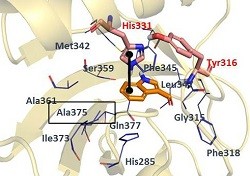Human microbiome: educating the immune system against fungal infections
Humans have coevolved with ubiquitous or commensal fungi (referred to as the mycobiome) occupying mucosal surfaces, the skin, lungs and the oral cavity. Emerging evidence indicates that the mycobiome dynamically interacts with the host and the microbiome, regulating immune reactivity at mucosal surfaces as well as distal sites. However, a weakened immune system more vulnerable to microbial insults or microbial dysbiosis can divert commensal fungi to act as parasites or facilitate infection by opportunistic fungi capable of causing serious disease. This is exemplified by the occurrence of candidiasis following antibiotic use. Therefore, understanding the host/microbiota signals that determine whether a fungus is defined as a commensal or a pathogen constitutes a medical priority. With this in mind, scientists of the EU-funded FUNMETA project went beyond traditional reductionist approaches of the past and employed a systems biology approach to investigate host−fungus interactions, focusing especially on metabolic pathways. Metabolic pathways regulate fungal immune responses Recent data suggests that the metabolic pathways of the essential amino acid L-tryptophan (trp) crucially contribute to immune homeostasis in fungal infections by reducing inflammatory responses and inducing immune tolerance. Present in mammals and fungi, the trp metabolic pathways are required for survival. The first step in trp catabolism takes place through the kynurenine pathway and involves the dioxygenase enzymes IDO1 and TDO2. ‘IDO1 is now widely recognised as a suppressor of inflammation and a regulator of mammalian immune homeostasis with significant biostatic activity on microbes’ project co-ordinator Dr Romani explains. Microbial and fungal stimuli activate IDO1 to lower host immunity, thus facilitating pathogen persistence. Alternatively, IDO1 may be utilised as an evasion mechanism for microbes to establish chronic infection. However, trp starvation may also be a host strategy for limiting the infectivity of trp-requiring intracellular pathogens. Symbiotic bacteria further contribute to antifungal resistance by converting dietary trp to various indole derivatives that signal downstream of the aryl hydrocarbon receptor (AhR). AhR is a cytosolic transcription factor that is activated through binding of various ligands. It is involved in many biological processes, including development, cellular differentiation and immune responses. Signalling downstream the AhR affects regulatory T cell development and induces interleukin-22 expression, a cytokine that controls the microbial composition and contributes to immune tolerance. FUNMETA researchers investigated the contribution of microbiota to the AhR/IDO1-mediated immune tolerance to fungi by correlating the metabolic profile with microbiota composition. Results demonstrated that the IDO1 enzyme is implicated in the interplay between trp catabolism by microbial communities, host metabolite production, and the AhR-dependent immune homeostasis at mucosal surfaces. ‘Therefore, AhR has a pivotal role in connecting trp catabolism by microbial communities, the host's own pathway of trp metabolite production with the orchestration of immune responses’ Dr Romani continues. Clinical implications An important achievement of the FUNMETA project was the identification of the bioactive indole-3-aldehyde (IAld) of microbial origin that contributed to AhR-dependent mucosal protection. This compound was patented for its therapeutic activity of protecting and maintaining mucosal integrity during fungal exposure, thus preventing a variety of fungal diseases. IAld could also be prospectively used for diagnostic purposes to monitor homeostasis and microbial symbiosis at mucosal surfaces in certain clinical settings. Overall, the FUNMETA project underscored the importance of a steady state dialogue between the host and its microbiota to maintain local immune homeostasis. Importantly, it helped decode this dialogue serving as the basis for the future development of therapies that integrates the microbiota, metabolism and immunity. The generated findings support the concept that targeting microbial dysbiosis through a combination of antibiotics, probiotics, prebiotics, and microbial metabolites is a promising druggable pathway for infections and other human diseases.
Keywords
FUNMETA, microbiome, fungi, L-tryptophan, AhR

